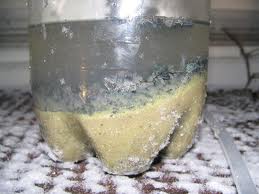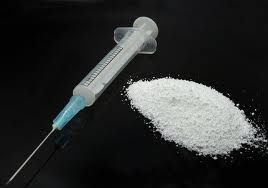Rehab Articles

Alcohol abuse affects almost all age and income levels, and there are some surprising statistics that many people are not aware of. In the USA alone between 12 million and 14 million people over the age of 21 use alcohol on a regular basis. Treatment for alcohol addiction can be found in all types, but a large percentage of people do not believe that they have a problem or that they need help and addiction treatment. The drinking habits of men and women are usually different, and many women choose wine as their alcoholic beverage of choice. Men tend to use beer or hard liquor instead of wine, but both sexes have seen an increase in alcohol consumption and binge drinking. This includes adults over the age of 40, a time when many are well established in life and have a lot to lose with an alcohol addiction.
The elderly are also a big concern because many in this population suffer from alcohol addiction as well. Roughly 10% of women who were between 40 years old and 64 years old reported binge drinking at least once in the last month, and the most common answer was three episodes of binge drinking within the last 30 days. This is the same rate that college aged women abuse alcohol, and it shows that all age groups are at risk. Alcohol abuse can lead to a higher risk of being victimized for women, and binge drinking is especially harmful to the body and internal organs. The Crossing Point has effective alcohol addiction treatment programs for all ages and both sexes, because we understand which methods work and lead to success.
Rehab Articles

Do the study results from a new research study show that addiction is for life? The answer is not quite that clear cut, and the study uses neural activity before and after addiction treatment to determine why some individuals never stop their substance abuse even when the consequences are deadly. Anyone involved in substance abuse programs and addiction treatment facilities understand just how hard it can be to break certain addictions. The new study shows that recovery can be a lifelong process. Biological Psychiatry is the journal where the study results are published. The editor of this journal is Dr. John Krystal, and when asked about the study results he is credited as saying “The knowledge that some neural changes associated with addiction persist despite long periods of abstinence is important because it supports clinical wisdom that recovery from addiction is a lifelong process.”
Addiction treatment is very important, and there is no quick fix for substance abuse. During the study there were 3 groups used. One of the groups had no substance abuse issues at all, another group involved individuals with current substance abuse, and the third group involved patients who were in recovery after experiencing addiction. Even after the substance abuse was abstained from for a long period of time the reward center of the brain did not revert back to the previous function. Once the addiction changed the neural pathways and reward center of the brain these areas did not go back to normal once the substance abuse was stopped.
Rehab Articles

Methamphetamine addiction treatment is on the rise in the United States, and addiction to these drugs can be caused by legitimate use as well as abuse. Methamphetamine has been prescribed in the past for many medical problems and disorders, including obesity, depression, ADHD, ADD, narcolepsy,and others. Today methamphetamine and the cousin drug amphetamine are class II controlled substances, but these medications are being prescribed to young children in ever increasing amounts in order to treat hyperactivity and a lack of concentration in the classroom. Some believe that these drugs are being over prescribed in an attempt to control kids and make it easier on parents and teachers. Some parents have their children classified with disorders that are treated with methamphetamine so that the drug can be obtained. There have been cases of soccer moms and suburban parents becoming addicted to methamphetamine in this manner.
Methamphetamine addiction treatment is critical if an individual develops an addiction, and stopping the drug use may not be possible unless the right treatment facility and program is involved. Regardless of the age of the individual using methamphetamine treatment is crucial to a full recovery. Depending on the level of methamphetamine addiction a medical detox program may be needed before treatment can begin. When used improperly or abused for recreational purposes methamphetamine can cause damage to the internal organs, including the heart and other vital structures in the body. The central nervous system may be overloaded, and eventually a psychotic break may occur. If you or a loved one have a methamphetamine addiction then treatment is imperative in order to recover completely. Without methamphetamine addiction treatment the risk of relapse will always be high even if the user abstains from the drug for a period of time.
Rehab Articles

Individuals who have received a dual diagnosis have both substance abuse problems and mental disorders. Until recently many addiction recovery professionals were unsure whether 12 step programs could help those who were dual diagnosed, and there were concerns that the mental disorders would not be properly treated and the right medications would not be determined. A recent research study shows that 12 step programs can offer some benefits for individuals who have a dual diagnosis, and these programs can help with substance abuse treatment and addiction recovery. The study results can be found in the Alcoholism: Clinical and Experimental Research Journal in the February 2014 issue. An area of concern is that the 12 step programs are only designed to treat substance abuse, and that some mental disorders may make the individual uncomfortable in the groups.
What the research is showing is that dual diagnosis patients can benefit from 12 step programs, as long as other treatment is also provided for the mental disorder that the individual has been diagnosed with. In spite of reports that AA and other 12 step programs are against any form of medication the study shows that many of the groups have numerous members who believe that medication is acceptable when needed. Another concern before the study results was that 12 step programs may not recognize the mental disorder symptoms, and may assume that the individual is not working through the program as intended. When both substance abuse and mental disorders occur a wide support system is crucial. 12 step programs can be another link to the support that recovering alcoholics and drug abusers need, and they can be beneficial to the recovery process when used properly.
Rehab Articles

According to some of the latest research results from SAMHSA’s Center for Behavioral Health Statistics and Quality the illegal use or abuse of any narcotic prescription drugs will increase the risk of heroin use by a considerable amount. The study states that those who have abused prescription drugs in the past were as much as 19 times more likely to engage in heroin abuse. Americans who were between the ages of 12 years old and 49 years old, and who had previously abused prescription drugs intended to relieve pain, were much more likely to turn to heroin abuse within the following year than those who have never abused narcotic prescription drugs. The study did note that a little under 4% of this population had used heroin in the 5 years following the prescription drug abuse though.
Non medical use of prescription painkillers often causes addiction, and this can lead to serious or permanent injury or even death in some cases. In 2011 the number of Americans that admitted heroin abuse had doubled when compared to the levels for 2007, and this trend is alarming. The rate for this form of drug abuse in individuals under 12 did not change, but the rate for those between 12 years old and 49 years old skyrocketed. What was surprising is that the rate for heroin use was lowest in the southern USA, but this region still had high prescription drug abuse rates. The study also showed that African Americans were the least likely to turn to heroin abuse when compared to other ethnic groups and racial populations. What reasons can you think of for these differences?







